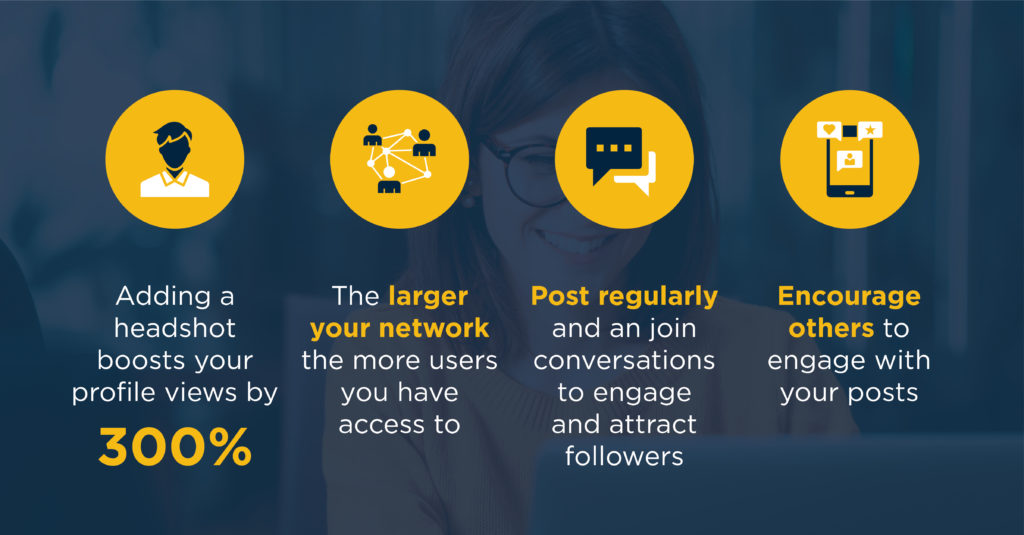Any city skyline consists of hundreds or even thousands of buildings, but a scanning eye will clock only one or two, sometimes because they are more attractive, but just as often because they convey more about the city behind them: about its citizens, its industry, and even its culture, history, and future—all from a glance of no longer than several seconds. We are drawn to such monuments because they quickly orient us and promise that we’ll get our money’s worth.
Your digital presence is no different. It’s your building in a skyline that represents your community, industry, or company. And make no mistake: you do have a building, whether you invest in it or not. Neglecting it communicates as much about you as curating it, and so, knowing that you do have one, better it be the Empire State Building than some nondescript corner store, better it be the Eiffel Tower than just another boulangerie. Don’t let your building’s distinctive accents blur with the concrete around it. Break above the skyline. Be the inspiration for a thousand postcards and the destination of a thousand visits. Be the building that conveys more than its dimensions.

Step 1: Tell Your Story
Use Simon Sinek’s Golden Circle as a guide: know the what, how, and why behind your profile. Communicating what you do is easiest; explaining how you do it is harder; knowing why you do, let alone explaining it, is much harder. It means being able to express concisely the deeper causes and beliefs that drive you—a daunting task, but one that separates the great from the passable. Weave these elements together to clearly express you are, for anyone who wants to know, and for a few who didn’t know they want to know.
If bricks are the basic unit of your building, words are the basic unit of your brand. Pick five that describe you. And be picky! Dispose of the bland and vague! Language is rife with colorful and nuanced vocabulary that can wrangle the abstract. Find the ones that say what you mean, and enlist your friends, colleagues, and family to suggest some—they can describe sides of you to which you are blind or can’t articulate.
Step 2: Optimize Your LinkedIn Profile
Headline: What technology are you specialized in? What solution are you trying to sell? These answers can serve as your LinkedIn headline. This section’s important because it’s “above the fold,” meaning visitors to your page see it before scrolling. It also appears next to your comments and next to your name in the search bar. The few words you put here must hook. They must command your audience’s attention and dissuade them from wandering elsewhere into cyberspace. Three phrases—job title, industry, and a unique insight, perhaps—should do the trick.
About: Your About section—also above the fold—is where your personal statement lives. Expand your headline; include your why, your skills, and your unique value. End with a call to action (e.g., “Book a meeting with me through this calendar link!”).
Experience: Include all relevant information: job titles, company names, and duration of employment. Your work descriptions and accomplishments should reinforce your specialization — they are evidence to it.
Skills: List all of your skills in this section, but identify your top three—they should reinforce your skillset. Ask trusted colleagues to endorse your skills. This is a section where you can highlight your specialty and ensure you are attracting relevant customers. If you are a partner that specializes in a specific technology or service such as UCaaS, Cybersecurity, IoT, etc., this is a great way to list your area of expertise. Make sure you manually select your top three skills. LinkedIn automatically populates your top reinforced skills, so make sure to pin your three most relevant ones yourself.
Recommendations: Recommendations are testimonies that prove your skills and differentiate you from others. Recruit your colleagues, clients, and managers to write them for you. Have at least two, and strive to add a new one every year.
Considerations: Make your profile public, but if you must update multiple items, turn off your notifications. Keep your profile updated—always.
Step 3: Play the Game, Understand LinkedIn’s Algorithms

More than two million posts, videos and articles are filtered, ranked, and displayed in the feeds of 645+ million LinkedIn members, but LinkedIn’s power is not distributed evenly. Know how it works so you can leverage it. Know, for example, that the LinkedIn algorithm prioritizes personal connections based on your interests and communities. Know that the larger your network, the more users you have access to. Know that adding a headshot to your profile boosts your views by 300%.
Start by growing your network. Add everyone you know or think is interesting. Encourage employees to indicate that they work at your company and to use your corporate hashtag. Attract followers—these are different than your connections. Acquire them by posting regularly. Join groups relevant to your profession. Join conversations. Be active.
Next, share posts that engage, whether they’re your own or others’. Just make sure they’re interesting or valuable. Encourage others to comment on them. Hashtag them—but limit your hashtags to four. Any more is obnoxious.
Step 4: Follow Sandler Partners
Last (but definitely not least), be sure to follow our LinkedIn page. You’ll find relevant tech, carrier, and company updates that you can use to help boost your own LinkedIn presence and profile. It’s also a hub for you to connect with like-minded people in your industry.
Making these small changes to your LinkedIn profile can have a big impact and up your chances of networking and connecting with the right people. 2021 is the perfect time for you to improve your online presence and build on the distinct features of your building to help you break above the skyline.
Watch the full session recording from our Summit on the Sandler Portal to learn more.
Tina Salimi
Tina Salimi is Sandler's Marketing Manager and leads digital strategy. She is an expert in customer and partner communication campaign development and brand building.
